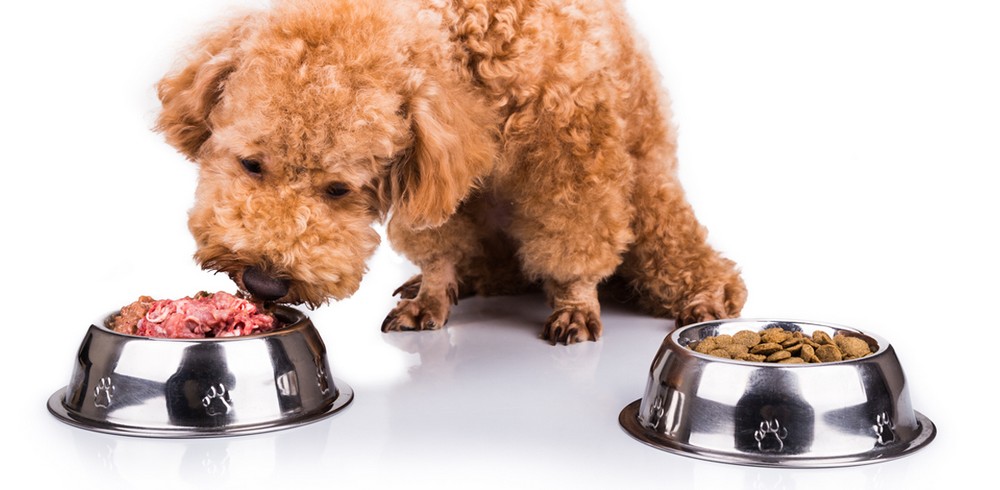Unsure About Raw? Top 10 Q&A
2nd May 2021
Raw dog food is becoming an increasingly popular choice for our four-legged friends and although many see this as the natural diet for their dog for which they’ve evolved to eat over millions of years, as owners we’re used to feeding commercial pet foods and as such we have a number of questions before giving raw dog food to our loved one! For further advice on portions, preparation and measurement guidelines just ask in store.
1) Does raw dog food contain harmful bacteria that puts your dog at risk?
It goes without saying that good hygiene practices should always be followed when handling raw meat both for humans and pets. Your dog however has a highly acidic stomach and natural enzymes that help prevent a range of illness, they can even process salmonella without becoming ill.
2) What are the benefits of a raw dog food diet?
This question really deserves a blog post of its own, but we’ve listed a few reasons below.
Coat Condition – Up to 40% of the protein your dog eats goes into their skin and coat as such when a dog is fed a low meat, cereal based diet (some dry foods) they will not have enough protein spare for their skin and coat. A raw dog food however is high in fresh meat and fats which work together to improve the coat quality.
Easier on allergies – Did you know that the top food allergens for dogs are wheat and corn? A raw dog food cuts out these allergens giving the dog fresh, natural meat often mixed with some fruit and vegetables allowing you to cut out or easily identify any allergens.
Quality Stools – Because raw dog food contains fewer ingredients and no fillers like many kibbles it will pass through your dog’s digestive system much easier. A higher protein diet from the frozen meat will also help your dog to produce less waste and a firmer stool which can help drain the anal glands cutting down additional vet visits.
3) Is raw feeding complicated?
Just as humans are told fresh food is the healthiest way to eat the same applies to our four-legged friends and raw feeding gives a fresh dog food option that can be fed to fit into our busy lifestyles. Many frozen raw foods just need to be taken out of the freezer and left to thaw for a couple of hours before adding to your dog’s food bowl. Never use a microwave as this will kill beneficial bacteria! You can also defrost many raw foods in the fridge over a longer period of 24 to 48 hours.
4) Can raw food help with weigh loss?
While by no means the only way for a dog to lose weight a high protein diet can help a dog lose weight without losing vital muscle mass. A raw diet also cuts out a range of ingredients such as plant fibre which is much more difficult for a dog to digest.
5) Are dogs fed with raw meat more prone to worms?
There is no evidence to suggest that dogs on a raw meat diet suffer from worms any more than dogs on other diets. All dogs should be treated regularly to prevent fleas, worms and other nasties.
6) Can raw dog food impact my dog’s behaviour?
Your dogs’ diet can impact their behaviour whatever food you’re feeding! Many believe that a balanced raw dog food diet can make some dogs calmer due to it’s fresh and natural nature which is free from many sugars, fillers and additives found in processed dog foods.
7) What does the word BARF stand for?
The word BARF stands for Biologically Appropriate Raw Dog Food.
A BARF diet is about feeding cats and dogs the diet they evolved to eat over millions of years, many experts refer to wolves in relation to dog’s naturally requiring a high meat diet.
8) How soon can I start feeding my puppy raw?
Many balanced raw foods can be handled by a puppy from six weeks old, always ensure the food is fully thawed before feeding and supervise your puppy. All raw feeding products will have guidelines on packaging around age, quantity to feed and more.
9) Can raw food be re-frozen?
If your frozen raw dog food has partially defrosted before you get it home then this can be put back into the freezer however where the meat has already been defrosted it is much safer to keep this fresh in the fridge for 2 to 3 days if necessary.
10) Can you feed raw and kibble together?
This is a controversial topic and your dog’s individual needs will be different some experts believe that as the foods are digestive at different speeds the two foods could lead to obesity and should not be fed together however others see no issue here. It is always best to consult your vet or a nutritionist if you are concerned about your dogs’ diet.





